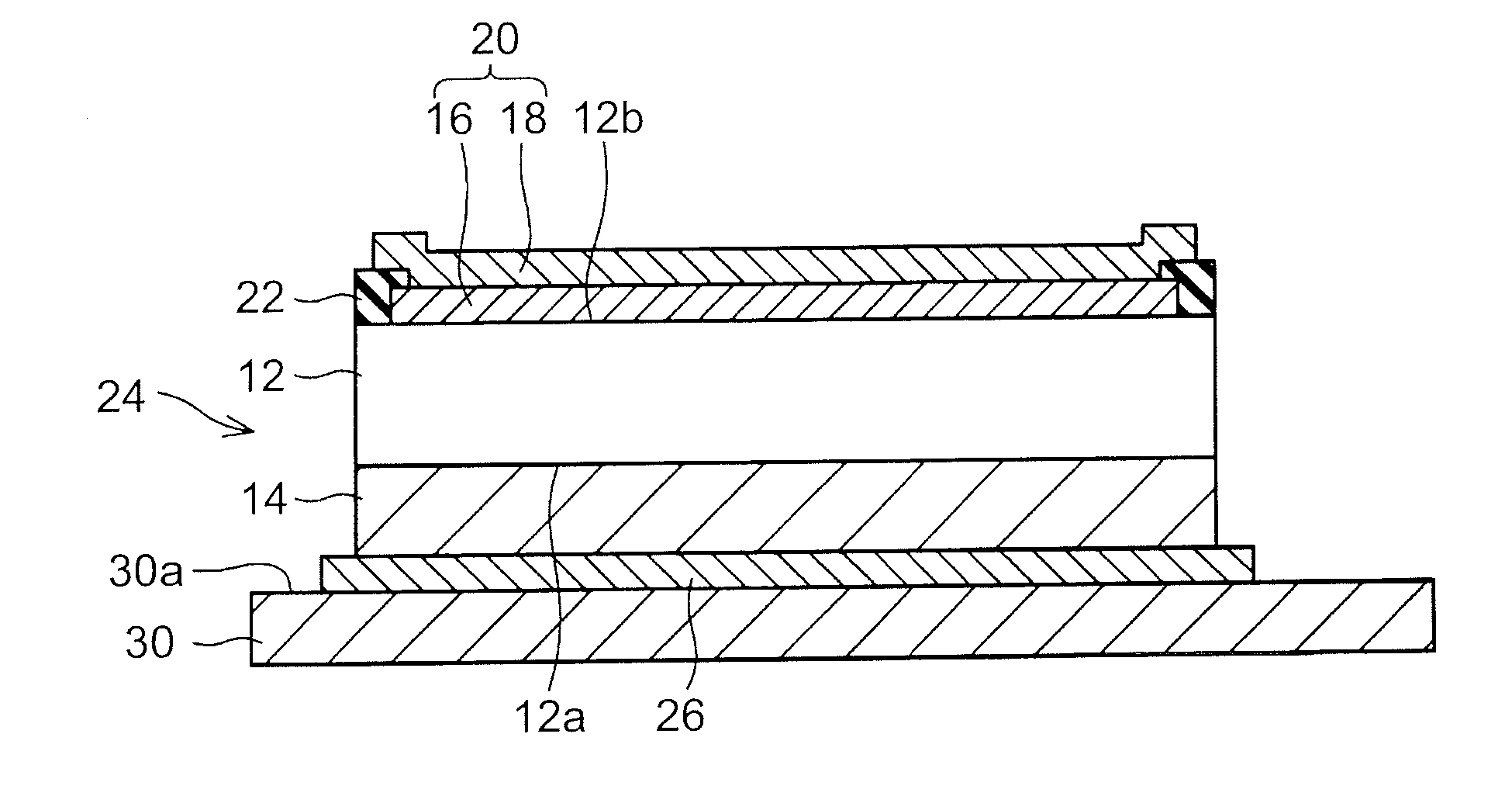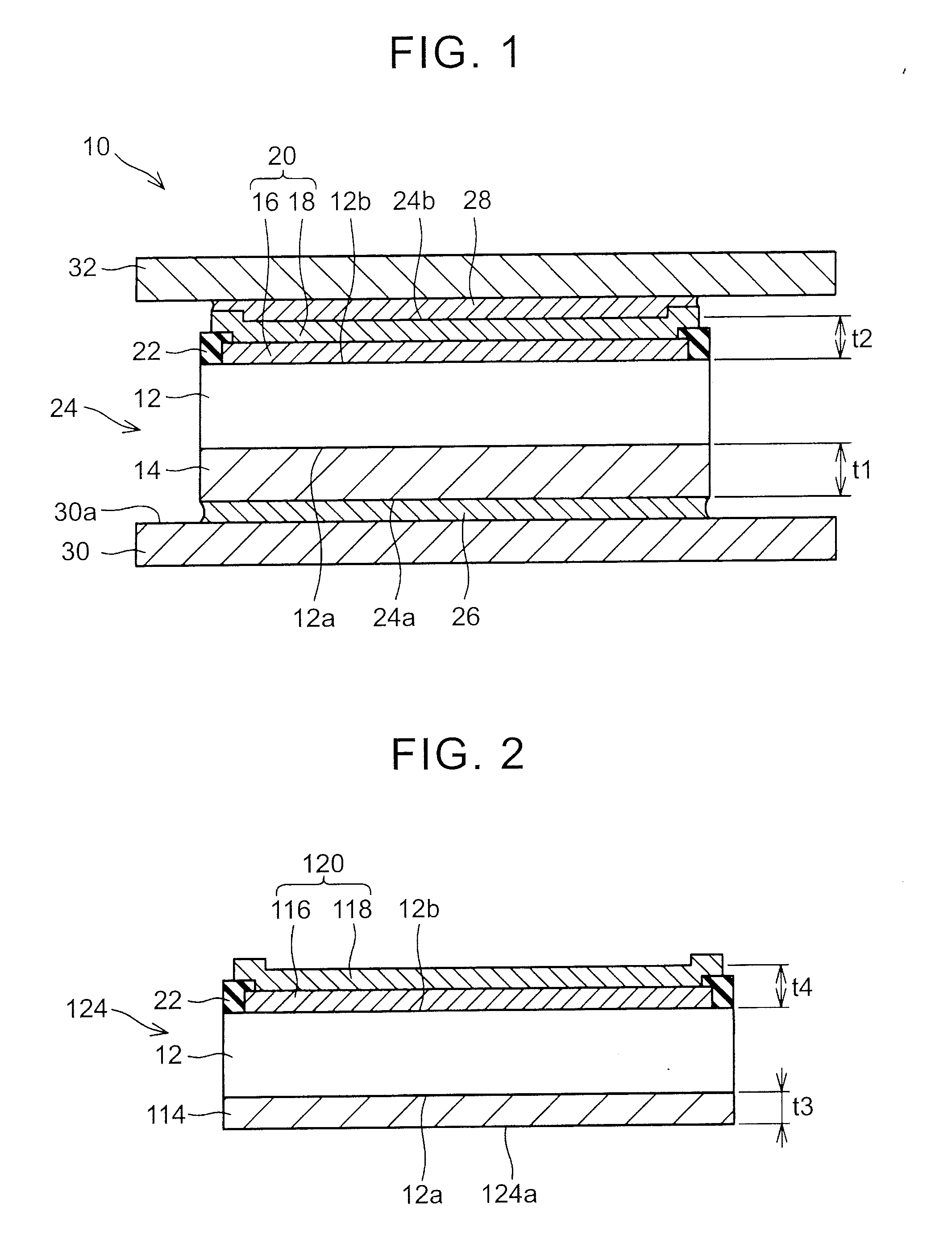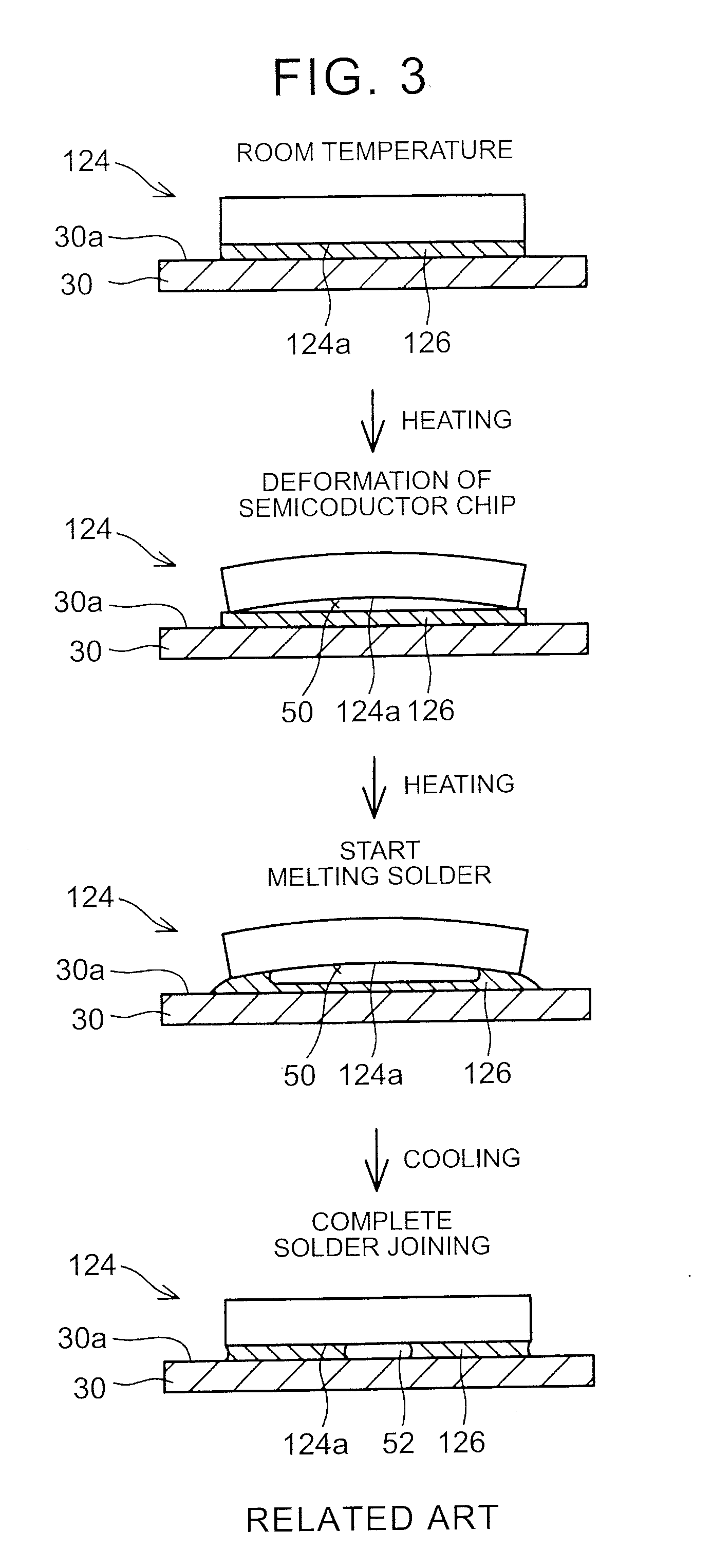Semiconductor device and method of manufacturing the same
- Summary
- Abstract
- Description
- Claims
- Application Information
AI Technical Summary
Benefits of technology
Problems solved by technology
Method used
Image
Examples
first embodiment
[0054]In other words, in the first embodiment, the volume of the back surface electrode 14 is set to be larger than the volume of the metal electrode 20, and the tensile force that is generated by the back surface electrode 14 is thereby set to be larger than the tensile force that is generated by the metal electrode 20. Meanwhile, in this embodiment, the effective linear expansion coefficient of the back surface electrode 214 is set to be larger than the effective linear expansion coefficient of the metal electrode 220, and the tensile force that is generated by the back surface electrode 214 is thereby set to be larger than the tensile force that is generated by the metal electrode 220.
[0055]Next, a description will be made on a third embodiment with reference to FIG. 6. A description will hereinafter be made only on points that differ from the first embodiment, and a detailed description on the same configuration as that of the first embodiment will not be made.
[0056]In a semicon...
fourth embodiment
[0065]The semiconductor device that includes the semiconductor chip 424 of the fourth embodiment can be manufactured in substantially the same manufacturing method of the above-described semiconductor device 10. However, the manufacturing method differs from that of the semiconductor device 10 in the following points. More specifically, in the semiconductor device that includes the semiconductor chip 424, the front surface electrode 418 is manufactured by the mask sputtering method. In other words, the non-electrolytic plating method is not used. It is possible by using the mask sputtering method to form the front surface electrode 418 as the continuous and seamless metal film not only on the exposed surfaces of the front surface electrodes 416a, 416b but also the front surface of the insulation layer 422. In addition, the materials that are used to constitute the front surface electrode 418 have smaller linear expansion coefficients than the materials that constitute the front surf...
PUM
 Login to View More
Login to View More Abstract
Description
Claims
Application Information
 Login to View More
Login to View More - R&D
- Intellectual Property
- Life Sciences
- Materials
- Tech Scout
- Unparalleled Data Quality
- Higher Quality Content
- 60% Fewer Hallucinations
Browse by: Latest US Patents, China's latest patents, Technical Efficacy Thesaurus, Application Domain, Technology Topic, Popular Technical Reports.
© 2025 PatSnap. All rights reserved.Legal|Privacy policy|Modern Slavery Act Transparency Statement|Sitemap|About US| Contact US: help@patsnap.com



